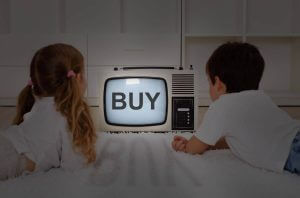
Quick question: is small business branding a term you’ve come across often? It’s even possible you’ve simply never heard of it. Well, here’s the deal. Businesses that take the time and the thought to invest in their brand rarely get things wrong, especially when that business is a small one.
As a small business owner, I know you’d always have to worry about forging a path through a market overrun by the big guns. But you can say goodbye to that as soon as you learn how to develop your brand. Trust me, it wouldn’t matter if that business at the corner of the street sells the same service or product. If your branding is spot on, you’ll always get your due. However, to talk about branding, you must know that you’ve got to own a brand first.
Why don’t we get down to it then?
The Simple Definition of a Brand
Defining a brand isn’t hard math. And contrary to the general conception, a brand is not a logo or a slogan. These are, at best, part of the branding process. Instead, a brand is simply an idea or concept that gives your business an identity and conveys such an identity to prospective clients. The idea or vision you structure your business around is how everyone will treat it.
One thing about brands is that you can’t touch or feel them, but they’re perceivable and highly valuable. Most of the big businesses around thrive on their brand alone. And if you want to succeed as well, you need to lock into small business branding.
The Different Branding Types and Strategies
Exploiting branding to your advantage may not be as straightforward as you think. That is because there are different branding strategies. However, the good news is that I’m about to tell you about these types and put them in ways you can understand.
Company Name Branding
This is simply branding done on a company level. It involves companies using logos, slogans, colors, packaging, and even their name to create an identity that resonates with their customers. Coca-Cola and McDonald’s are great examples. They’ve built a brand with that name that almost everyone can relate to. It doesn’t matter if someone sells similar products tomorrow. Coca-Cola will always be Coca-Cola.
Attitude Branding
This branding strategy relies on feelings and attitudes to market products or services. When a company does this, they use the feelings or attitudes of their prospective customers to create an emotional connection, which eventually brings in sales.
Private-Label Branding
Private-Label Branding differs from the branding types mentioned above because it involves a retailer branding products manufactured by another party. For example, say your business already has a brand, you can decide to apply that brand to other products manufactured by someone else, so it sells as yours. Supermarkets, business chains, and clothes stores, among others, do it a lot. Here’s a little secret: this branding is especially handy when competing with larger businesses.
Individual Branding
Individual branding occurs within a set of varying products manufactured or sold by a company. The variety allows each product to be branded individually, giving each one its meaning and identity for its intended market. One good example is what Apple does with their iPads, iPhones, and the rest.
Brand Extension Branding
This type of branding occurs when a company with an existing brand opens up a new venture. Rather than start building up a new brand for the new product from scratch, they just apply the brand they’ve already built and voila! They’re all set.
What is the Main Function of a Brand?
As a small business owner, it’s not enough to know about small business branding. It’s also necessary that you know what exactly you’re going into. So what exactly is a brand supposed to do for you? Well, I’m about to answer that.
- A brand will help manage and minimize risks for your customers
- They build confidence in your customers by revealing the source of the product since a brand reflects the business owner
- A brand will help your customers curb the time they’d usually spend sifting through products in search of the best
- It helps breed loyalty
- It conveys a sense of quality
- Branding helps you legally protect your products, services, and ideas
- It gives you an edge over the competition
What Makes a Brand Successful?
Big companies like Google, Microsoft, McDonald’s, et cetera, may make branding look very simple—it’s definitely not magic—but you’ve got to give it a lot of thought. Once you get your branding right, it’s an upward curve from there.
You must understand that your brand is not a logo, vision, or mission statement. It’s way more than that. It’s a compendium of the logo, packaging, vision, mission, and so on. But most importantly, it’s the idea or perception that you and the world have of your business. Mind you, you have to see your business the way you want it to be seen before others will follow suit.
For your brand to succeed, you must know what you want to be known for. Once that’s set, you can pattern all your actions and plans to fit this perception or image.
A successful brand comprises a business’ internal culture and the external conveyance of the unique things it offers to the market. Typically, your brand will answer questions like: what are you selling? What do you offer? What’s your identity? What’s your reputation? What problems do you solve? How far can you go in proffering solutions? And so on.
Ultimately, a successful brand will mark you out from other businesses and carve a special place in the hearts of buyers.
Using Customer Service as Your Branding Edge
Anyone who says you can downplay the value of customer service in your business is a liar. If you’re looking for an edge in small business branding, it would be unwise to neglect customer service.
If small business branding infers creating a perception for your business, then you must be able to help your customers to that perception, especially if they’re new customers. Potential buyers always reach out with an expectation to be filled. Your job should be to help them fulfill this expectation in any way possible.
Every interaction you have with a customer is branding. So, take everything seriously. Ensure your greeting, communication, follow-ups, and promotions are top-notch because they can make or mar your brand. Therefore, ensure you have properly trained customer service agents.
It’s also important to know that there are different channels to administer services to your customers. While you can get some over the phone, you can also get some through emails or social media. It’s bad branding to force your customers to come up to you. So, try to go down to them. At the end of the day, every satisfied customer is a major boost to your small business branding.
Most people don’t know this, but I’ll give it to you for free: nurture your brand. It’s an asset, perhaps the most valuable asset. It can fetch you a boatload of money if you’re more inclined toward profit and returns. But it can also die. So, you’d want to be very particular and meticulous about the steps you take toward building your brand.












